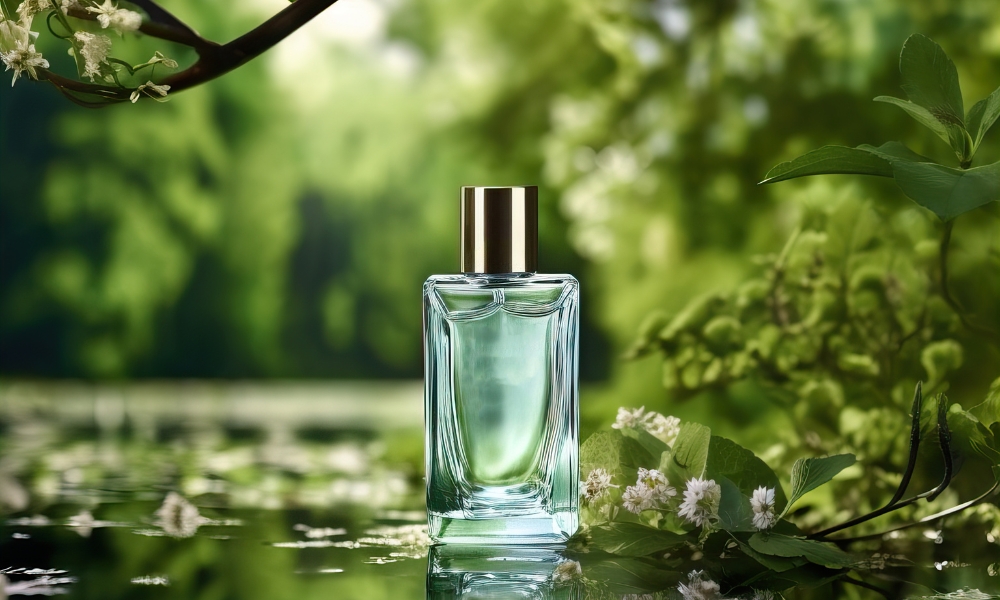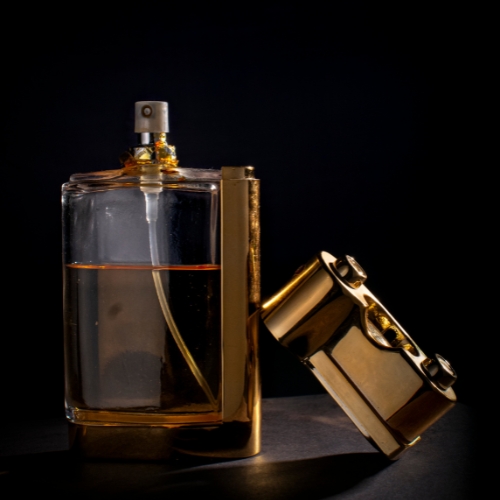
Perfume ingredients play a vital role in defining the scent, longevity and quality of fragrances. The debate between natural and synthetic ingredients has been ongoing, with both offering unique advantages. Synthetic perfume ingredients have gained prominence for their consistency, affordability and ability to create innovative scent profiles that natural ingredients alone cannot achieve.
This article dives into the differences between natural and synthetic perfume ingredients, their benefits, properties, formulations and unique applications, providing actionable insights for choosing the right components for your fragrance creations.
What Are Perfume Ingredients?
- Perfume ingredients are aromatic compounds used to create fragrances. These can be derived from natural sources like flowers, fruits and woods or synthesized in laboratories.
- They include top, middle and base notes that define the structure and depth of a fragrance.
Types of Perfume Ingredients
- Natural Ingredients: Extracted from plants, animals and minerals. Examples include rose oil, sandalwood and ambergris.
- Synthetic Ingredients: Created through chemical processes to replicate natural scents or invent entirely new aromas. Examples include aldehydes, musk and synthetic oud.
Key Differences Between Natural and Synthetic Perfume Ingredients
1. Source
- Natural Ingredients: Harvested from nature through processes like distillation, cold pressing or solvent extraction.
- Synthetic Ingredients: Manufactured using chemical processes that mimic or enhance natural scents.
2. Consistency
- Natural Ingredients: Can vary in quality and scent profile depending on factors like climate, soil and harvest conditions.
- Synthetic Ingredients: Provide consistent quality and aroma, ensuring uniformity in fragrance production.
3. Cost
- Natural Ingredients: Often more expensive due to labour-intensive extraction methods and limited availability.
- Synthetic Ingredients: More affordable and scalable, making them suitable for mass production.
4. Sustainability
- Natural Ingredients: Depend on agricultural resources, which can lead to overharvesting and environmental concerns.
- Synthetic Ingredients: Reduce pressure on natural resources and support sustainable practices.
A General Overview of Natural vs. Synthetic Perfume Ingredients
|
Aspect |
Natural Ingredients |
Synthetic Ingredients |
|
Source |
Derived from plants, animals and minerals |
Created in laboratories using chemical processes |
|
Consistency |
Varies due to environmental factors |
Highly consistent across batches |
|
Cost |
Expensive due to limited availability |
Cost-effective and scalable |
|
Innovation |
Limited to available natural resources |
Allows for unique and innovative scent creations |
|
Sustainability |
May involve extensive resource use |
Produced with reduced environmental impact in controlled settings |
|
Longevity |
Often less stable and short-lived |
Long-lasting and stable over time |
The Role of Synthetic Ingredients in Perfume Ingredients
1. Creating Complex Scent Profiles
- Synthetic ingredients replicate rare or difficult-to-extract natural scents, such as ambergris or violet leaf.
- They enhance the depth and complexity of perfumes, creating balanced and harmonious compositions.
2. Fixative Properties
- Synthetic fixatives stabilize volatile fragrance notes, ensuring a longer-lasting scent.
- Common synthetic fixatives include synthetic musk and benzoin derivatives.
3. Tailored Formulations
- Synthetic ingredients can be customized to suit specific fragrance requirements, such as hypoallergenic options or lighter profiles.
- This flexibility supports the development of niche and mass-market perfumes.
4. Improved Solubility
- Synthetic ingredients are easier to blend and solubilize, ensuring seamless integration into perfume bases and formulations.
Significance Using Synthetic Perfume Ingredients
1. Creating Complex Fragrances
- Synthetic ingredients allow perfumers to layer, intricate scent profiles, balancing top, middle and base notes with precision.
- For example, combining synthetic oil with floral aldehydes can create a unique oriental fragrance.
2. Enhancing Natural Blends
- This hybrid approach maximizes both authenticity and performance.
- Adding synthetic fixatives like musk enhances the longevity and depth of natural ingredients.
3. Customizable Concentrations
- Synthetic ingredients can be adjusted to specific concentrations, ensuring optimal performance in various applications.
- This flexibility supports innovation in both luxury and mass-market fragrances.
Why Choose Synthetic Perfume Ingredients Over Natural Ingredients?
1. Unlimited Creative Potential
- Synthetic ingredients empower perfumers to explore uncharted territories in fragrance creation.
- Their ability to replicate or exceed natural aromas fosters innovation and differentiation.
2. Environmental Responsibility
- Choosing synthetic ingredients supports sustainable practices by reducing the reliance on endangered natural resources.
- This aligns with global efforts toward eco-friendly production.
3. Consumer-Friendly Pricing
- The affordability of synthetic ingredients allows brands to offer high-quality fragrances at competitive prices.
- This accessibility broadens the market reach for both niche and mainstream products.

Factors Driving the Demand for Synthetic Perfume Ingredients
1. Rising Preference for Affordable Luxury
- Consumers seek high-quality fragrances without the premium cost of natural ingredients, driving demand for synthetic alternatives.
2. Expanding Fragrance Markets
- The growth of niche and personalized fragrance markets has highlighted the demand for customizing synthetic components.
3. Technological Advancements
- Innovations in synthetic chemistry have improved the quality and safety of synthetic perfume ingredients, enhancing consumer trust.
Conclusion
Synthetic perfume ingredients are revolutionizing the fragrance industry by offering unmatched consistency, affordability and creative potential. Their ability to replicate and enhance natural aromas while addressing sustainability concerns ensures their continued relevance in modern perfumery. Whether in luxury perfumes, home fragrances or functional products, synthetic ingredients empower brands to deliver exceptional value and innovation.
Recent Posts
- Balsam Peru in Fragrance Formulations and Balsamic Aroma
- Resinoid Olibanum: Historical Significance and Traditional Uses
- Balsam Peru Resinoid Extraction, Processing Challenges and Innovations
- Resinoid Galbanum: Storage, Handling and Safety Compliance Guidelines
- How to Incorporate Balsam Tolu Resinoid in Tobacco and Bakhoor Fragrance Blends?
- BMV Fragrances to Participate in Two Premier Global Exhibitions : SIMPPAR & Beautyworld 2025
- How to Use Resinoid Vetiver in Agarbattis and Burning Industry?
Copyright @ 2025 | BMV Fragrances Private Limited | All Rights Reserved
Website Design & Digital Marketing by webmasterindia.


